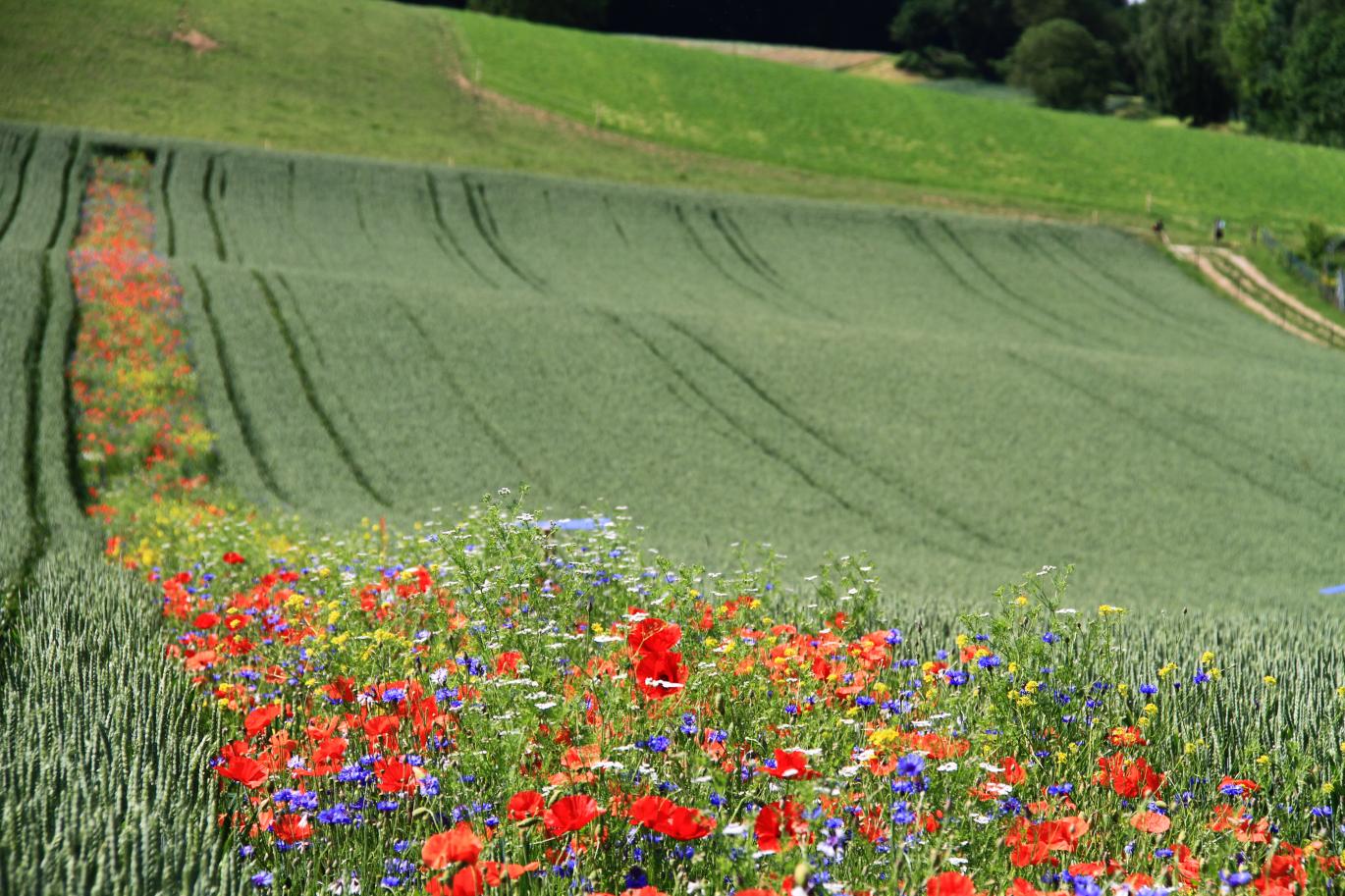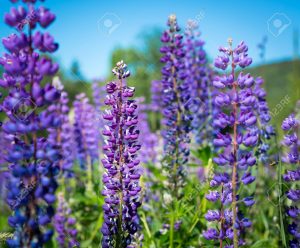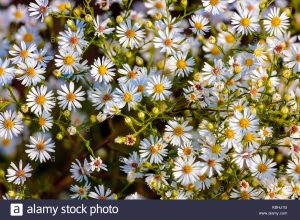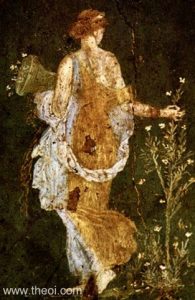
It is fortunate that recent research is showing that wildflowers can help us in our struggles against pests in our farms and gardens. Richard Pywell of England’s Centre for Ecology and Hydrology (CEH) is conducting a field study using strips of wildflowers in farm fields to cut down on or eliminate the use of pesticides. link Pywell is using oxeye daisy, red clover, common knapweed and wild carrot in England and a similar study in Switzerland uses cornflowers, coriander, buckwheat, poppy and dill. Researchers in France found that the use of wildflowers helped the majority of farms cut pesticide use by 42 percent without harming productivity.
Wildflowers are the tough guys of the floral plant world, They have spent around 130 million years developing their well known abilities to attract beneficial insects such as lacewings, ladybugs, hover flies and parasitic wasps. They don’t need to be sprayed or ‘cultivated’ and ward off chewing insects, nematodes and fungus. They don’t need to be fenced since they are not palatable to deer and other grazing animals; some are extremely poisonous. It would be a happy thing if we could use them right in the middle of our farms, gardens and flower beds.
Now is the time to decide which wildflowers might help me so I have been studying the offerings of wildflower seed merchants. I think I will sprinkle strips of wildflower seed between my fall plantings of broccoli, cauliflower, brussel sprouts and cabbage. Then perhaps these flowers will be ready to help out with the spring and summer gardens in 2019. The question is which flowers.

Wild lupine self-seeded in my garden a few years ago and it is beautiful. Three feet tall and graceful, blooming in pink, purple and white, it took over the entire garden in about two years. Bees, butterflies and dragonflies hovered over the garden that looked like paradise for months. There was, however, no room for vegetables; and since it was poisonous and not a substitute for my edible plants, I spent two years pulling it up in great handfuls. I am currently embattled with Mexican Hat in my pastures. It is virulent. Deer only eat it when they are starving. It crowds out everything edible for my stock. It is beautiful, like Lupine, and wildflower merchants extol them both–and charge for their purchase. The point is to be careful in picking out what wildflowers to buy; it’s comparable, broadly, to the TV shows where a woman gets picked up in a bar by a cute guy who turns out to be a serial killer.
The wildflower merchants also tout lists of flowers for the Northeast, Southeast, Northwest, Southwest and Central U.S. With a few exceptions, the list is the same throughout the country–which speaks to the extreme hardihood of the wildflower. Wild sunflowers, Maxmillian sunflowers, bee balm, coreopsis, columbine, coneflowers, milkweed, goldenrod, heath asters, asters, Indian paintbrush, Indian blanket, coneflowers, cardinal flowers, black-eyed Susans, milkweed, Mexican hat, giant ironweed, vervain, geum, evening primrose, liatris and leadplant grow where they please and most of the country pleases them.
I consider many of these to be flower-garden plants: coreopsis, bee balm, columbine, coneflowers, wild sunflowers, black-eyed Susan, geum and the heath aster are all beautiful in a flower garden. All are sold in plant nurseries as flowering plants. I love all of them and will include them in my protective strips.

Bee balm is considered the best plant to put in with tomatoes. It only lasts one season in my garden but, in my imagination, should look good in the tomato patch. Coneflowers have not thrived for me; maybe they will like the rich soil in the vegetable garden. Wild sunflowers planted themselves in my vegetable garden this year and I left them; partly for the shade they provided and aphids love them. The sunflowers, however, show no damage when aphids swarm on them. They do have huge stalks that are very hard to remove.The heath aster has seeded itself with me and choked out even Maxmillian sunflowers. It is covered in bees every fall. Covered with bees. I love it.
I think we are experimenters. Insect-killing chemicals kill indiscriminately. Even the organic products I use are expensive and have to be applied at least every other day in the height of the season. We need alternatives. Wildflowers. It might work.
